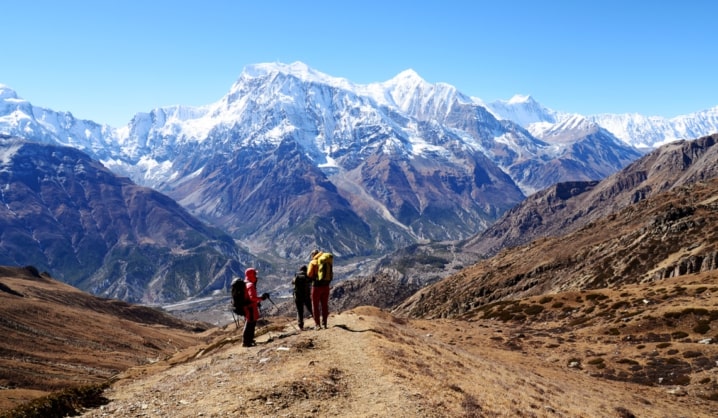Trip Overview
Himalayan Wildlife- The Himalayan region is rich in flora and animal diversity. Nepal is home to a portion of the Central Himalayas, the world’s highest mountain range. It is home to eight of the world’s fourteen highest peaks, including Mount Everest. Many of Nepal’s major rivers originate in the Himalayas. It will also aid in the regulation of our planet’s climate. The Himalayan people have a distinct culture and way of life that incorporates nature and people into a single fabric of life.
A Himalayan wildlife trip can include visits to a hidden village, natural beauty, traditional culture, numerous species of wild and domestic animals, numerous beautiful white mountains, rivers, lakes, snow leopards, bears, mountain goats, blue sheep’s monkeys, Yaks, colorful birds, Himalayan flowers, a variety of rare pure medicinal herbs, Chir (pine), Oak, Deodar, Fir, Rhododendron, Birch, and Juniper, as well as many other plants. Similarly, this trip is also called the Nar Phu Valley Trip/Trek. Prepare for a Himalayan wildlife adventure with breathtaking mountain views and the country’s naturally unique scenery.
Nepal is a fascinating destination around the globe for adventurous wildlife safari tours, and some of the most popular national parks are always popular with visitors. A portion of the Terai’s southern plain land features well-preserved jungles that serve as natural habitats for a variety of species. The main features of the Nepal safari vacation include eco-resort facilities, traditional hospitality, and experiencing rare endangered creatures in nature. Wildlife tours in Nepal are great for vacationers looking for a variety of experiences and a truly enjoyable vacation.
What’s More
Travel Nepal Now has put together a full jungle safari package for you to enjoy during your adventurous vacation in Nepal. Wild Life Safari tour places that you will have the opportunity to visit with us. Rhinoceros, Royal Bengal tigers, and wild elephants can all be found in Chitwan National Park. In addition, the park is home to a variety of birds and reptiles. The best bird sanctuary in Nepal is Koshi Tapu, while the best Tiger habitat is Bardiya National Park. Therefore, the Himalayan Wildlife Tour is the best in Nepal.
Travel Nepal Now offers Nepal’s top tourism destinations, as well as nature, culture, and animal activities. Because of its wonderful art and architecture, the Kathmandu valley has always been a topic of debate for tourists before and after their visits. This tour includes cultural diversity. The Kathmandu valley, which includes Kathmandu, Patan, Bhaktapur, and Kirtipur, has developed into a sophisticated metropolis. The valley has a population of about 2.7 million people. You will love visiting the valley’s world heritage site.
About Nar Phu Valley Trek
The Nar Phu Valley trip is an extraordinary off-the-beaten-path adventure through the exotic Nar Phu Valley’s secluded terrain. The lovely valley is located in Nepal’s northern Annapurna and Manang regions. Similarly, this walk is suitable for individuals who enjoy trekking in a peaceful environment in the serene countryside. During the Himalayan Wildlife tour, you will visit the Nar Phu Valley.
The region’s centuries-old historic customs and traditions have survived and are well-preserved. You will need a special Nar Phu Valley hike permit to gain entry to the secluded valley. Lastly, the trek’s natural nature sets it apart from other treks in the area.

